What Drives You?
What drives you? Motivation is one of the most common objections I hear around why people don’t achieve their fitness and fat loss goals. As a result, there are 4 types of motivation . . .
Lost your password? Please enter your email address. You will receive a link to create a new password.

What drives you? Motivation is one of the most common objections I hear around why people don’t achieve their fitness and fat loss goals. As a result, there are 4 types of motivation . . .

I have never stopped believing in the power of a vision that captures one’s imagination and fuels a deep seated passion to make a difference in life and leave legacy of contributions that is remembered long after we are gone. The idea of creating a vision that fuels my desire to live life fully forms the foundation for a life that is built on purpose and serves to open doors of opportunity for others as well.

In the context of aging healthfully we can draw from the idea that “pulling us forward’ is an inner desire to NOT live life on the “edges” but become completely engaged and energized by what it is that we do on both the professional and personal levels. I believe in the power of a vision that yields purpose and also creates a deep sense of responsibility and accountability to one’s goals. This idea of creating a vision is at the heart of how I view my life now. I have spent a lifetime making decisions about both personal and professional matters that were limiting and not empowering. When I finally created my vision I learned I had become committed to my purpose and felt free to live my dream without fear –or reservation.
Here is my vision as it is currently written: “Healthy aging is a consciousness issue. It is not merely the death of our cells but is a complex and dynamic process that is grounded in change as life unfolds for each of us. The challenge as I see it is discovering the potential that lies within each of us to become all that we were meant to be mentally, physically and spiritually. This potential can carry us to living lives of fulfillment, peace, and prosperity if we remain present during each moment of our lives – living consciously. Learning about who we are from the ‘inside –out’ while acting upon our choices in the present moment, enables and empowers us to live a life of great accomplishment. This is my vision of a world that is possible.” Implied in this statement of purpose is the idea that my health and my evolving needs as I grow in time are dependent on the present circumstances as I understand them.
Supporting this vision is what I call my ‘core beliefs’ that define WHO I am as a human being – and as a professional. Some of these beliefs are:
My values are clear. Without my health I can accomplish nothing in my life. This notion fuels my desire to train mentally, physically and spiritually each and every day in order to expand the borders of my consciousness and be of service in ever expanding ways.
I have lived in my “shell” a long time and now I feel the presence of growth in all areas of my life. These articles are helping me to clarify my message and become more than I ever dreamed possible. It is about time after all I have lived 66 years, right? The programs I develop around these ideas will form the nucleus of what it is I am here to do (including publishing my book – no excuses!). I am also going to be “pushing back” a bit against the increasing influence of technology in our lives because every moment we spend tweeting, texting, checking our iPhones and communicating constantly online pulls us away from the ‘moment’ – the present – and this is only point of power through which we can change our lives for the better.
The world is “attached” to technology now and we no longer acknowledge each other – we are just too busy! Make the time to meditate, imagine, feel, think and enjoy your life. If prayer works – pray by all means. Making time to take the “inner journey” everyday will make a world of difference in how you view and live your life – now and in the future. This work has paid off in spades for me. I am running faster and getting stronger everyday because I have taken the time to be with “me”. I have begun to prioritize my needs as they become apparent to me so that my life continues to move forward with meaning and purpose enabling me to be able to maximize the time I have left – whatever that turns out to be. (Remember the 6 minute mile on my 80th birthday?) Be strong and know that you have something unique in you that only you can give the world. Let your light shine and see what happens!
Article reprinted with permission from Nicholas Prukop.
Nicholas Prukop is an ACE Certified Personal Trainer & a Health Coach, a fitness professional with over 25 years of experience whose passion for health and fitness comes from his boyhood in Hawaii where he grew up a swimmer on Maui. He found his calling in writing his first book “Healthy Aging & You: Your Journey to Becoming Happy, Healthy & Fit” and since then he has dedicated himself to empowering, inspiring and enabling people of all ages to reach for the best that is within them and become who they are meant to be – happy, healthy and fit – and be a part of a world where each person can contribute their own unique gifts to life.
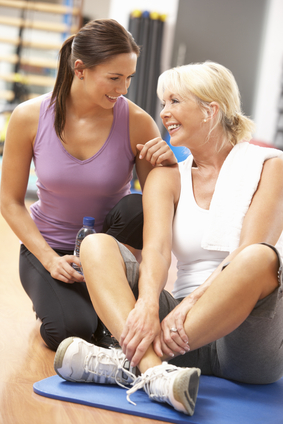
Menopause is bad.
Exercise is good.
More exercise is the solution!
Is that it?
 It’s not quite that simple, although most things you will read will tell you that any form of physical activity is helpful. There is a lot of truth to it. Physical activity at any age is beneficial and for women during mid-life exercising carries additional substantial health benefits. The menopausal transition is associated with many health risk factors such as increased risk for cardiovascular disease, osteoporosis, decreased bone mineral density, metabolic syndrome, and musculoskeletal symptoms. Exercise prescriptions for those health risks are the same as for non-menopausal women.
It’s not quite that simple, although most things you will read will tell you that any form of physical activity is helpful. There is a lot of truth to it. Physical activity at any age is beneficial and for women during mid-life exercising carries additional substantial health benefits. The menopausal transition is associated with many health risk factors such as increased risk for cardiovascular disease, osteoporosis, decreased bone mineral density, metabolic syndrome, and musculoskeletal symptoms. Exercise prescriptions for those health risks are the same as for non-menopausal women.
However, according to my research, not all forms of physical activity are of equal benefit in helping with menopause symptoms. In fact, some forms of exercise can exacerbate certain types of symptoms such as hot flashes and insomnia.
I believe that it is important to pick the type of exercise depending on your symptoms rather than just exercise to exercise.
So how do you know which exercise is best for you? You start by reading this article! 🙂 To help you find your way through the labyrinth of research that is out there, I’ve consolidated the findings of the last 20 years of research on this topic so you don’t have to.
First I want to highlight the overall benefits of exercising regardless of symptoms…
Too much exercise and/or intensity can:
Moderate intensity appears to have the most benefits…
The following exercise guidelines are specific to helping you with menopause symptoms as well as increased quality of life throughout the menopausal transition. These recommendations do not apply to overall physical health.

All information is based on peer-reviewed research. I usually add a reference list of all the articles I read to put together an article but this one would be way too long. If you’re interested in finding out more about specific research articles used for this blog, contact me.
Article reprinted with permission from Dr. Maria Luque.
Dr. Maria Luque is a health educator and fitness expert that specializes in helping women take charge of their own wellness. A native of Germany, she pursued a career driven by a passion for health and fitness. Dr. Luque currently teaches at the College of Health Sciences at Trident University International, in addition to conducting workshops, group/personal training, and writing. She’s an IDEA Fitness Expert and has been published in the IDEA Fitness Journal as well as appeared as a guest at local news channel to talk about quality of life and menopause. Visit her website, doctorluque.com
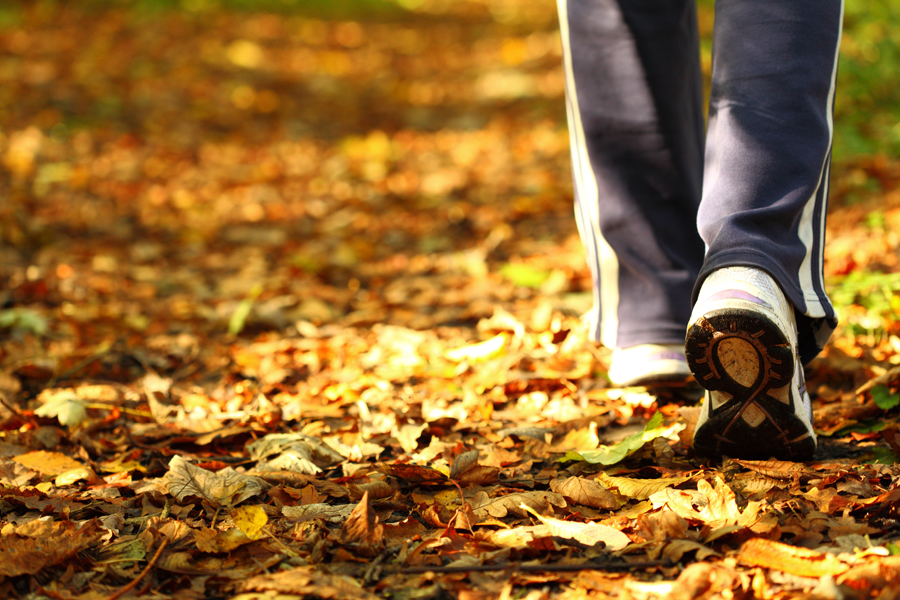
 In the fall of each year, as summer fades from our view, we often find ourselves having to work diligently to “restart” our fitness activities in preparation for the holidays – and the year to come. As the seasons change to shorter days and cooler weather becomes a reality, we have to “re-think” our fitness plans/goals and address the changes that are coming – thoughtfully and carefully – in order to ensure continued growth and results.
In the fall of each year, as summer fades from our view, we often find ourselves having to work diligently to “restart” our fitness activities in preparation for the holidays – and the year to come. As the seasons change to shorter days and cooler weather becomes a reality, we have to “re-think” our fitness plans/goals and address the changes that are coming – thoughtfully and carefully – in order to ensure continued growth and results.
Being able to understand the “cycles” of life and how the changing seasons affect us is important in programming your fitness activities for the balance of the year. Success comes when we plan and evaluate again what it is we want to achieve with our fitness activities and then “re-set” our priorities to account not only for the change in the weather – but our lives as well.
I will share with you some tips on how you might maintain your momentum when it comes to fitness programming following the summer months of mostly fun activities that don’t fit the mold of “exercise”. Remembering exercise can be a form of “play” is important when transitioning to the fall and winter months that lie ahead. Let’s be creative and hopefully this article will spark a thought (or two) or maybe an idea that might help you move into the fall and winter months ready to continue challenging yourself – and not just “working out” – or “exercising”.
The key to transitions in life – as well as with fitness activities – is the thought that goes into planning the program. Very often, the mind conceives of an idea that captures what it is we REALLY want to get out of our fitness activities but the heart never gets fully engaged in the plan. We THINK our way to a new plan, but do we ever really FEEL our excitement about the plan (and its possibilities) as well? This question relates to having exercise BE FUN so that you return to it again and again.
I connect my mind (thoughts) to my heart (feelings) every day when I go into my “quiet time” – visualizing and then appreciating the training I have planned for the day. What is missing in my opinion – and the most common reason people quit on their fitness activities – is that they never connect the mind – which conceives the plan – to the heart – which “experiences” the plan. If you love what you are doing – you will do it for life – just as I have done with my running program over the past 52 years.
Technology is killing physical activity and squeezing out the present moment. I see this every day at my gym: people mindlessly peddling on a stationary bike, watching TV, looking at their phones and completely disregarding the activity – and the moment. No wonder people are bored – and quit – they are not present and have no way of knowing if what they are doing is in any way fun – or useful to their purpose (if they have one in mind at all). Smart phones DO NOT need to be in the gym or constantly with us. Taking a break while we exercise is a GOOD thing. This is a time for you to enjoy and promote your own well being. Let’s release the stresses of life for even a few minutes – and learn something new about ourselves in the process!
 You should connect your mind to your body BEFORE starting your training session so that you can enjoy what you have chosen to do. This inexactly what I do. This way, I first “see” with my mind’s eye and then experience it in my imagination before I even get to the gym to train. When the “hard” days come – and they will – (especially when you have been away from planned fitness activities for a while), you need your heart and mind to communicate regularly with each other to ensure success with your plan.
You should connect your mind to your body BEFORE starting your training session so that you can enjoy what you have chosen to do. This inexactly what I do. This way, I first “see” with my mind’s eye and then experience it in my imagination before I even get to the gym to train. When the “hard” days come – and they will – (especially when you have been away from planned fitness activities for a while), you need your heart and mind to communicate regularly with each other to ensure success with your plan.
When I say everything in life starts with a thought and gets carried out into the world through the feeling side of our nature, I am saying that life is constantly communicating through our senses – thought, feelings, and intuition. With thoughts and feelings working together in harmony, you will not have to make excuses or have any regrets later because you are totally committed to your purpose. This is true personal power.
In order to be successful in executing your plan you must engage your WHOLE being in order to maximize your results. This is HOW you get through the fall and winter months – by preparing in advance with purpose – and setting goals you really want to achieve. In enjoying the journey – and learning more about yourself in the process – you can rest in the knowledge that your life works! This sounds pretty great to me!
The issue of adherence is being answered today through technological advances that help you track your progress and also assist you in managing your behavior. By this I mean there are innumerable devices on the market that will tell you how well you have done, whether you have met your goals and also show you what you can do to improve your results. The problem as I see it is that you are still accountable and responsible for your results regardless of how much you use technology to keep you “on track”. How much fun is that?
I solved the problem of adherence early in my life by falling in love with being active as a child and then finding new ways to engage my body – and mind – as I got older. I later came to believe in recording my sessions in writing and this behavior allowed me to learn even more about my own capabilities – and potential – in the process. I found a method for staying on track naturally that worked for me and today I have complete running records dating back to 1979. I know what I have done, what I am capable of doing – and am able to set goals going forward that are based upon my results from my past and current work.
Looking back through my running records I can learn a great deal about my current capabilities based upon the goals I have accomplished. This knowledge gives me the opportunity to set my course for the coming year – and define what I want to achieve going forward. (Run a 6 minute mile on my 80th birthday for example?) It is in the process of envisioning your goals – and experiencing the results before they occur (in your mind) – that you will succeed – enabling and empowering yourself as you move toward success. Remember that everything in life – as well as fitness programming – starts in your imagination first and then gets revealed in the “real” world through your choices and activities.
Always start with what you enjoy doing most and then add additional activities as you go. Change is inevitable and if you embrace it willingly – and allow yourself the opportunity to make new choices – you will grow in confidence and commitment to your purpose. If what you are doing seems natural and fun to you – keep going and enjoy it! If not, make minor adjustments at first – and then if necessary – more significant changes later. Nothing ventured, nothing gained is the rule here.
The internet has many options and “meet ups” are a good way to go. There are groups for running, cycling, walking, hiking, swimming, sports related activities such as volleyball and handball or racquetball – and any interest you can imagine. Meet ups are pretty much everywhere and if not you can start your own meet up group right where you are – from workplace relationships to volunteer activities to church activities – whatever suits you.
If you find people who have a common interest in what you would like to do, the group will “keep you on track” while you share, learn and build new friendships as you accomplish your goals together. Team sports – which is another way to go – (softball, basketball, etc.) can also keep you motivated and interested in your physical wellbeing by holding you accountable to a group that needs you to participate to be successful (bowling, swimming meets, road races etc…) Going through the “tough” months on your own can be challenging, so finding support with other people who care as you do is always a great strategy.
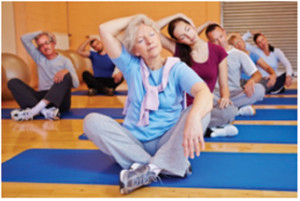 The gym setting can be challenging because you are on your own most of the time (unless you hire a trainer). The times where you can interact with others and form mutually supportive bonds with other like-minded individuals is through group exercise programs (there are many options) such as aerobic or yoga classes. Each method has value and both can be lots of fun while you learn what suits you as an individual. These and other group activities are very popular because they bring people together – enabling you to learn and share your journey together (yoga classes are particularly powerful in this way).
The gym setting can be challenging because you are on your own most of the time (unless you hire a trainer). The times where you can interact with others and form mutually supportive bonds with other like-minded individuals is through group exercise programs (there are many options) such as aerobic or yoga classes. Each method has value and both can be lots of fun while you learn what suits you as an individual. These and other group activities are very popular because they bring people together – enabling you to learn and share your journey together (yoga classes are particularly powerful in this way).
In the summer of 1982 when I joined Nautilus Plus after my wife left me, I went to as many as five aerobic classes a week because they were fun, challenging, and the music and moves helped me forget my pain for a while. I eventually went back to running but I never forgot the great help I received by participating in those classes. The instructors were young, enthusiastic, talented and absolutely LOVED teaching the classes. All in all it was a very positive and supportive experience that helped me get through a rough summer of questioning and uncertainty.
Originally posted on healthynewage.com. Reprinted with permission from Nicholas Prukop.
Nicholas Prukop is an ACE Certified Personal Trainer & a Health Coach, a fitness professional with over 25 years of experience whose passion for health and fitness comes from his boyhood in Hawaii where he grew up a swimmer on Maui. He found his calling in writing his first book “Healthy Aging & You: Your Journey to Becoming Happy, Healthy & Fit” and since then he has dedicated himself to empowering, inspiring and enabling people of all ages to reach for the best that is within them and become who they are meant to be – happy, healthy and fit – and be a part of a world where each person can contribute their own unique gifts to life.
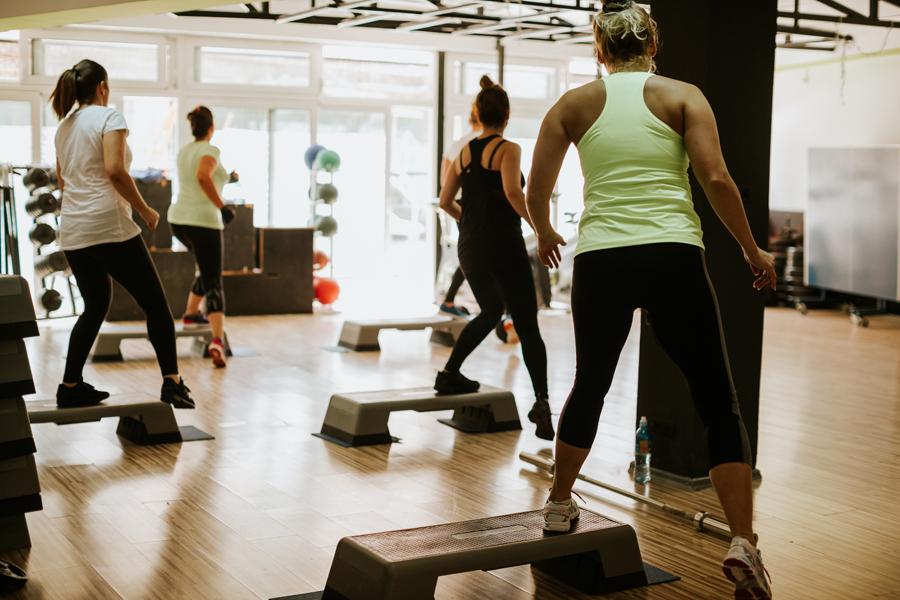
Are you doing too much high intensity exercise? High Intensity Interval Training (HIIT) has been the holy grail of fitness trends for the past several years. Is it the Holy Grail for YOU? Here’s what a recent study says and how to interpret that if you’re a woman flipping (or wanting to) her second half with flare.

Exercise is stress. High intensity exercise is greater stress. Stress causes cortisol.
Cortisol plays two roles in our lives. It’s both the stress hormone and the energy hormone. The perfect amount of stress makes you feel alive and thrive. Too little or too much cortisol each causes problems.
When you’re exercising with the right amount of “overload” or stress you create a positive, not negative, stress response. That’s not to say (because I hear you saying that’s how you negate stress) that exercise doesn’t relieve stress. It can. But we sometimes don’t give ourselves the right dose, frequency or intensity to optimally relieve stress without having it come back to bite us you-know-where.
The key is to find your personal optimal exercise. I’m an advocate for the right exercise for you right now. Women in midlife are more susceptible to the negative effects of stress as they go through other major hormone changes. What worked once – even as recently as months ago or last week – may not be your ideal exercise this week.
That doesn’t mean you’re going to suffer, gain weight, get moody or any of the above. If you adjust your exercise according to what’s going on, respond to it even if you can’t predict what changes will be, you’ll sail through those years from peri-menopause to beyond menopause better. That sets you up for a full Flipping 50 (49-99) feeling as young as your habits will allow you. It’s habits that determine how your genetics express or suppress (epigenetics).
What’s the best exercise? The answer is not the same for you and for every other woman over 50. We’ve got common denominators but your details are unique to you. If you’re deconditioned, conditioned, or an athlete it changes your exercise prescription. If you’re in adrenal fatigue, you’re estrogen dominant, or have low testosterone will change what I suggest you do. If you have osteoporosis, are trying to prevent it, or you have 20 or more pounds to lose, each of these (and more) will change the exercise plan that’s best for you.
A recent study of weight training performed as high intensity interval training (HIIT) was created to determine if HIIT weight training was better than traditional weight training. Researchers asked, is heavy weight training better than the moderate-to-light weight training recommended for decades?
A side note here: the fear of “bulk” from strength training is legit. The three sets of 10-to-12 repetitions taught for decades, as some kind of gold standard actually IS a bulk-building protocol. Ten or fewer repetitions is the optimal strength, bone building, and fat reducing/lean increasing protocol while higher repetition ranges are best for performance enhancement and influencing smaller muscle activation.
Your personal exercise protocol is also influenced by whether you’re a mesomorph, endomorph, or ectomorph. Each body type can respond differently to a protocol.
According to the study performed by the American Council on Exercise, a leading authority in fitness, moderate or average exercise should occur between 70 to 80 percent heart rate intensity, HIIT training requires at least 85 percent heart rate intensity, the study says. Les Mills’ researchers (creators of Body Pump) wanted to determine how to best achieve a healthy balance between one’s HIIT volume (minutes of HIIT per week) and one’s positive stress response. Their hypothesis was that more than 30 or 40 minutes of weekly HIIT volume would prompt a reduced positive stress response.
“A positive stress response to exercise is a critical part of creating the bio-chemical changes in the body that help build new muscle and improve fitness,” the study says. “The stress response can be measured effectively by examining cortisol and testosterone concentrations in saliva.”
Not to repeat myself but as mentioned earlier, this is really what we refer to as the principle of overload in fitness. The stimulus of exercise must be adequate to provide overload such that the body responds after (when between sessions fitness occurs IF you have adequate rest, food, and sleep).
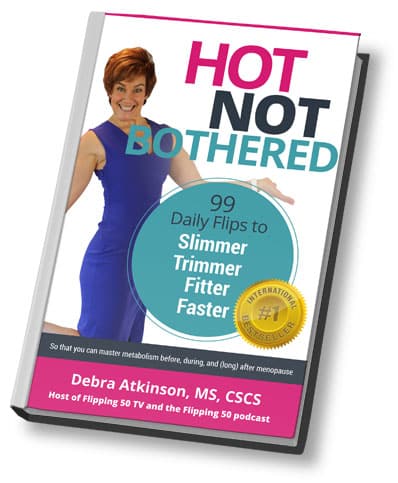 Remember Your Hormones
Remember Your HormonesIt’s key for YOU to remember, Flipping 50 friend, that you have another thing to consider. The status of your hormones, not just of your mind’s desire to lose fat, or get in shape needs to be considered when designing your exercise program. Pushing through … following lame social media memes suggesting that “sweat is fat crying” can backfire on you and increase fat storage when stress goes the wrong way. When you read “move more” interpret it as walking down the hall to deliver a message as opposed to going to boot camp 6 days a week or doing two-a-days.
Let me take a step back here and describe what it feels like to lift at a level defined as HIIT. There’s a lot of confusion about HIIT. Anything that gets you breathing slightly harder is NOT HIIT. Lifting with a weight that causes fatigue at 10 repetitions correlates with 80% intensity. So in order to lift and a HIIT level of 90% as per the study, you’d be lifting a weight closer to 5 repetitions.
Don’t panic. You definitely progress to this point. You also can reduce the weight slightly and use power, increasing speed on the lift but always controlling the lowering (eccentric) phase of exercise to achieve this overload without a heavy weight. You do this in daily life… the wind grabs the car door, the door to a store is heavy, or you heft the garbage bag out to the curb… so if you’re worried about injury (valid) do consider whether your daily activity warrants the work so you’re prepared.
Moving fast to get breathless is not necessarily overloading the muscles in a way that muscle changes and creates lean muscle tissue that assists in fat burning.
THIS is a key distinction most program creators and attendees fail to make. Going to a boot camp where you’re moving fast from a strength exercise to a cardio exercise to a core exercise will likely tire you. Tired is not muscle fatigue. Muscle fatigue must be reached so your body changes.
Will it burn calories right now? Yes. Will it change your body, your body composition, and set you up for years of a stronger leaner body? No.
The study used strength training as the mode of high intensity exercise. Researchers compared one set of 5 repetitions for each of 10 exercises to 1 or 2 sets of 10 repetitions for 10-12 exercises. The subjects were both male and female and ages up to 59.
The results showed body fat decreased significantly for both groups. Blood pressure and LDL (bad) cholesterol decreased only for the HIIT group.
“When it comes to HIIT, adding volume doesn’t deliver better results,” the report says.
“It actually hinders. To get the full benefits of HIIT and prevent overreaching, our recommendation is to…
Do a maximum weekly HIIT sessions that are above 90 percent maximum heart rate for 30-40 minutes…
…and balance them with other less demanding workouts.”
“It’s also imperative that you let your body recover properly after a HIIT session. This way, you’re likely to perform better when you do your HIIT workouts and benefit from the positive results,” researchers added.
This distinction of when to work hard and when to recovery is so important. It’s not intuitive for a generation that witnessed the work harder, get better results discipline of our parents.
Article reprinted with permission from Debra Atkinson. Originally printed on flippingfifty.com.
Debra Atkinson is the #youstillgotitgirl who is flipping 50 and changing the way thousands of women think about their second half. She’s the host of the Flipping 50 TV Show and the Flipping 50 podcast. As a master personal trainer, strength and wellness coach with over 30 years fitness industry experience, she works with women who are pro-aging with vitality and energy. She is an international fitness presenter, author of hundreds of articles and multiple books. Visit her website, flippingfifty.com
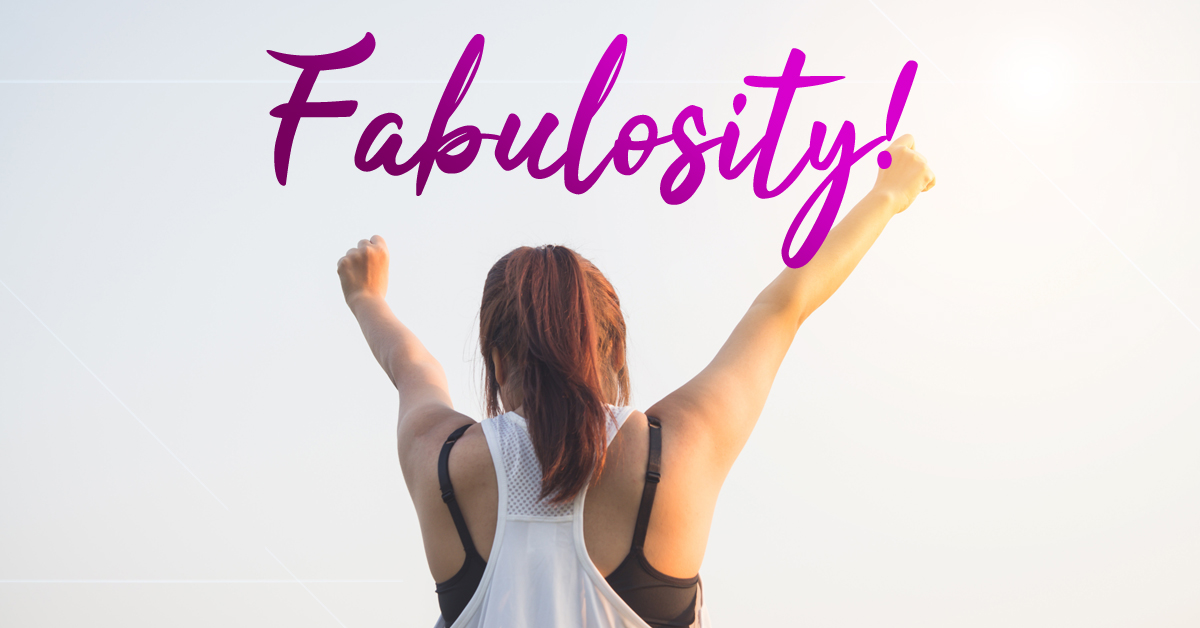
I was back in my hometown recently, where I health coached and taught for over 20 years. I missed my clients so I decided to take some of them out for tea and dessert. I thought for a minute the dessert…
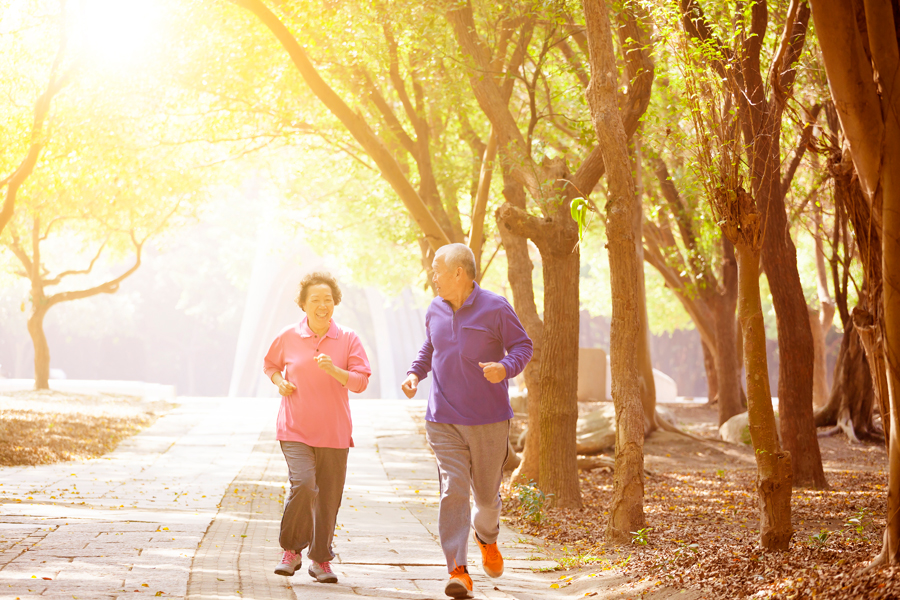
In a previous article about A Paradigm Shift to Personal Responsibility, I set up the premise that the healthcare system is technologically driven and derives its results through partnerships with the insurance industry, government, pharmaceutical industry, medical profession and the hospitals that deliver services to patients.
Given the complexity of the system, patients have have to learn to navigate it to get the proper guidance, access and information from the right people at the right time for the right results. Moreover, the system is laden with traps in the form of its many “hidden” extra costs which means that going down the wrong route can turn into an expensive mistakes. Therefore, I believe that people need to become educated on the value of prevention by living a life that represents the core values of “wellness” and all that this word has come to mean over the past two decades.
 A Definition of Wellness
A Definition of WellnessIn 1993, I prepared a presentation for the Association of Human Resource Professionals entitled “Improving Health in The Workplace”. I designed it as a proposal to encourage corporate managers to see the value and importance of prevention through the eyes of the employee in partnership with the company. My intention was to develop a “win-win” model whereby the company enhanced employees’ lives by investing in programs that would help create a “workplace health consciousness”. This would assist people in making healthier choices thereby improving productivity and performance. The company would benefit in the form of fewer days of work missed and the cost of healthcare would decline as well.
Needless to say, the presentation did not net me any new corporate clients but it did yield a couple of wonderful personal training clients. My thought process was focused on personal health and fitness services delivered on site, but being a single fitness provider the idea was probably too impractical to pursue. My presentation focused on the individual and its takeaway messages was:
We are what we eat, we are what we think, we are what we do, we are what we feel, and finally we are what we believe.
My idea was that if we become healthy in our thinking and expression first, then our bodies will follow suit: our new thought patterns will foster the adoption of new attitudes and behaviors. This model is just as true today as it was back in 1993 because wellness is not fitness – it is a consciousness of health that is ingrained in what we value most about our life and what that means to us.
I think it only fair to share with you my vision statement because it goes to the heart of why I am a proponent of healthy aging and believe prevention comes from “within” us as we focus on our choices while living in the present.
Healthy aging is a consciousness issue. It is not merely the death of our cells but is a complex and dynamic process that is grounded in CHANGE as life unfolds for each of us. The challenge, as I see it, is in discovering the potential that lies within us to become all we were meant to be – mentally, physically, and spiritually. This potential can carry us to living a life of fulfillment, peace, and prosperity if we remain PRESENT during each moment of our life – living consciously. Learning about who we are from the “inside-out” while acting upon our choices in the present, enables and empowers us to live a life of great accomplishment. This is my vision of a world that is possible.
I see now that what I envisioned for healthy aging will disappear in the world of the iPhone and other technologies if we do not become active players in the awareness of our own body and other sources that can control our thoughts and other processes. The goal of prevention is to “catch” the stressors BEFORE they create “dis-ease” in the body causing chronic conditions such as cancer. The problem is that the tests and the other “preventative” measures being used today only catch problems AFTER they have started to take hold in our bodies.
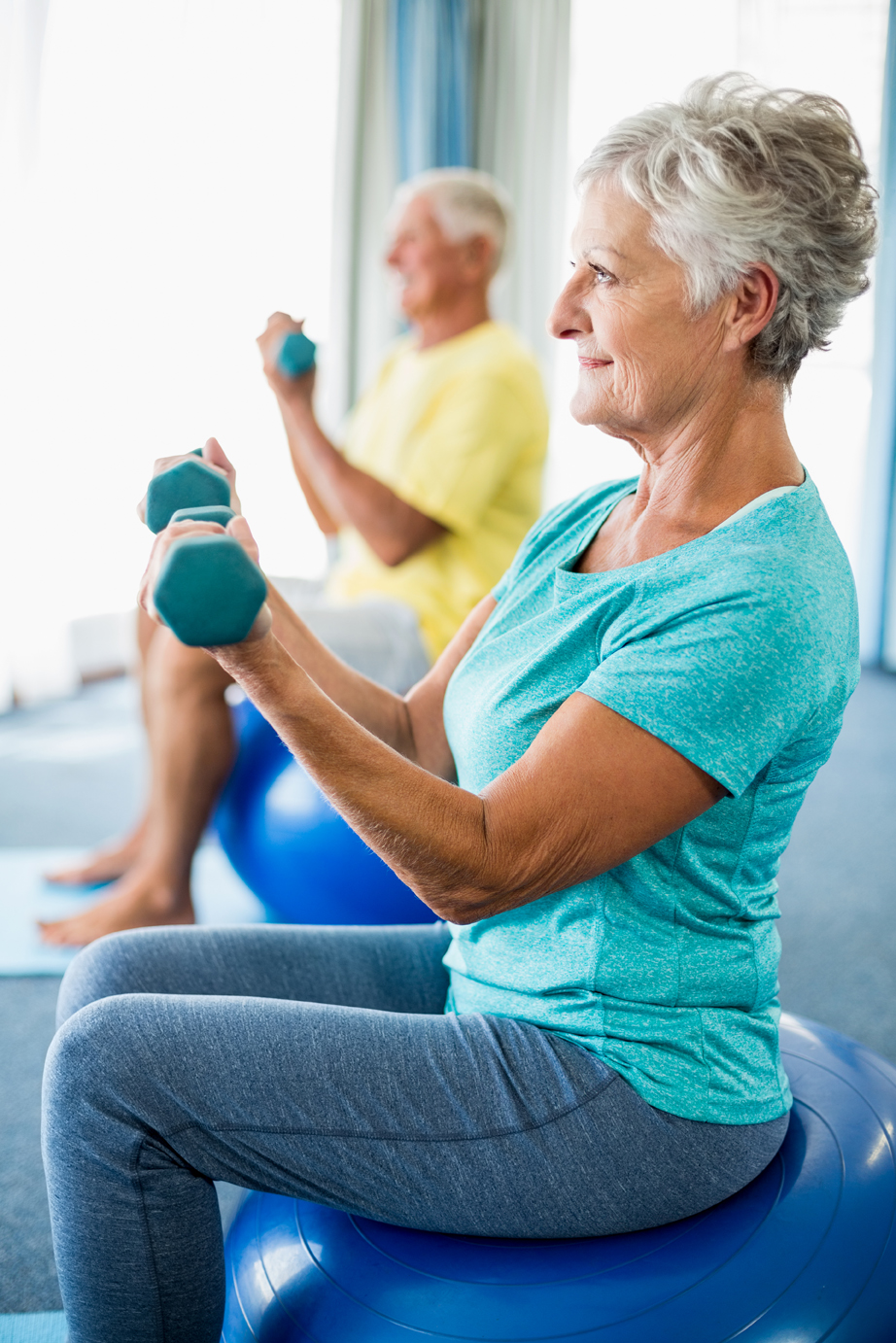 The Power of Five
The Power of Five1. The Power of Thought: Thinking is life. What we think we become. Everything in life evolves from thought. From this power comes our imagination, affirmations and ability to visualize outcomes. Dreams come from our thoughts. Disneyland was once a thought in Walt Disney’s mind. If we are staring at our phones over 200 times a day (which has been tested), we are missing out on our life and the changes that are occurring right before our eyes.
2. The Power of Change: “Change is the only constant in the natural order” as one of my favorite teachers taught me back in 1982. How we deal with change and address the challenges that change brings, plays a key role in whether we can go with the flow – or remain stuck where we are. Comfort zones keep us trapped in the place where change becomes almost impossible to embrace, but if we learn to let go of the past and embrace who we are in the present, life becomes so much more rewarding. “Go with the flow” is the best advice I can give when dealing with ALL change – it makes life so much easier and rewarding.
3. The Power of Choice: Choice is the real point of power in life. We “choose” every day of our life: whether we to go to work, go to the store, play with our kids or plan our futures. The point of making choices in the present is to create what you want from your life – and in your life. If you choose your health you will become active without excuses. You will eat well. You will entertain uplifting and loving thoughts. You will express yourself gently to those you love. You will not demand but forgive. You will value your every experience and be grateful for your gifts. This is to choose life in all its wonder and potential happiness.
4. The Power of Belief: Believing in yourself is always the place to begin. Believing in your potential to accomplish great things and to make a difference in the world takes work but it is possible with proper reflection and thought. “If you can conceive and believe, you can achieve”. This is true in all areas of life. Take responsibility for your beliefs and if they need to be altered or replaced – do so. Don’t wait until you are sick and tired and finally unable to believe at all in something more than your own life. Affirmations, meditation and reflection in quiet moments are ways to check in on your current beliefs. If you believe in yourself, anything is possible.
5. The Power of Consciousness: “The mind of man is unlimited in its potential and responds to specific demands made upon it”. This is another statement of belief I hold. I believe in opening my mind to new ideas and thoughts. I can create new and exciting ideas and some of these become realities in the world. This very piece of writing was an idea that is now materialised in the world to inspire others. My consciousness is one of hope and faith that I am being guided to create programs that will help people of all ages grow in consciousness so that they too can benefit from the ideas that others shared with me over the past 40 years.
Living in the present is challenging given the world we live in and all the demands that are placed upon us. We are on call 24/7 if we choose to let ourselves be taken in that direction. I refuse to let myself get taken into the world as Steve Jobs envisioned it. His world is not my world. I believe in the freedom to create my life by making the choices that are appropriate for me at any given time. Make your choices consciously and respond to your life and the changes it brings you by not resisting them. Be open and receptive to them. Thinking is the key. Think “through” your life. Do NOT react to outside pressures. Only then you will be able to enjoy the journey. This is true prevention.
Originally printed on HealthyNewAge.com. Reprinted with permission from Nicholas Prukop.
Nicholas Prukop is an ACE Certified Personal Trainer & a Health Coach, a fitness professional with over 25 years of experience whose passion for health and fitness comes from his boyhood in Hawaii where he grew up a swimmer on Maui. He found his calling in writing his first book “Healthy Aging & You: Your Journey to Becoming Happy, Healthy & Fit” and since then he has dedicated himself to empowering, inspiring and enabling people of all ages to reach for the best that is within them and become who they are meant to be – happy, healthy and fit – and be a part of a world where each person can contribute their own unique gifts to life.
If you need help in designing a fitness plan, you can contact Nicholas Prukop via email at runningnick@sbcglobal.net or read his inspiring book Healthy Aging & YOU

What are some things you can do to help your client recover and thrive after Breast Cancer treatment? What are important things to know to work with BC clients…
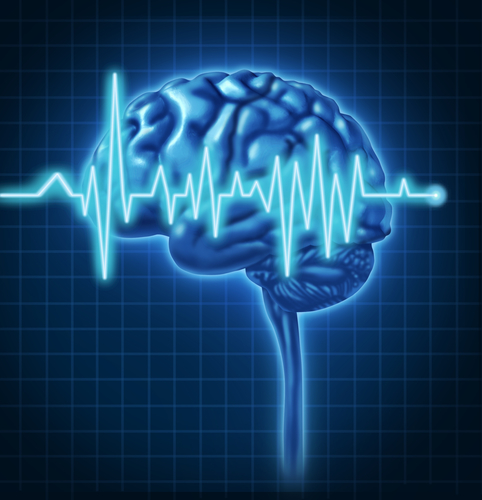
 Getting fit expands your mind.
Getting fit expands your mind.
When you start a program to develop better habits, get out of pain, or whatever the case may be, one thing you probably don’t expect is how your mind transforms.
Health and fitness are elusive, multi-failure and hard to reach topics for the majority of people. You may have even thought at one point that it’s just not possible for YOU to achieve your goals right?
My first piece of advice is just take the first step. Then the next step and then the next. If you keep taking a step forward, you eventually arrive at your destination. It’s simple when you look at it like that, isn’t it?
It comes down to making the right choices at each meal, to exercise daily, to go to sleep on time, to drink water is how getting fit expands your mind.
When you start to build your confidence and see results around something you may have previously believed to be impossible, it’s incredible what areas of your life open up.
People grow courageous and start businesses because of their fitness results. From the confidence they build through fitness, women choose to do certain fitness adventures or events. Even previously un-athletic seniors pursue fitness careers because of their results and desires to pass that on to others.
So, whether you’re deep into your fitness journey or just thinking about getting started, know that if you keep your mind open, success in fitness shows you that anything is possible.
Fitness is empowerment to the core. you’ll see the possibilities by believing getting fit expands your mind.
Originally printed on Move Well Fitness blog. Reprinted with permission.
Maurice D. Williams is a personal trainer and owner of Move Well Fitness in Bethesda, MD. With almost two decades in the industry, he’s worked with a wide range of clients, including those with health challenges like diabetes, osteoporosis, multiple sclerosis, hypertension, coronary artery disease, lower back pain, pulmonary issues, and pregnancy. Maurice is also a fitness educator with Move Well Fit Academy and NASM.